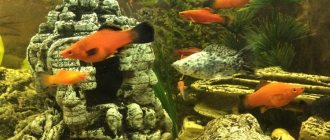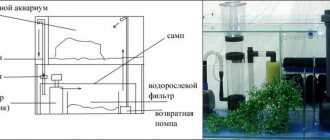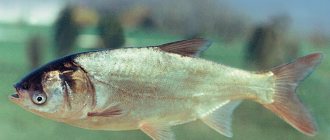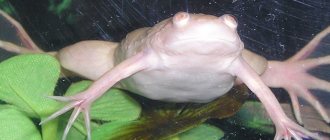XXI CENTURY Candy Fudge Scented water
266 ₽ More details
Video baby monitor Motorola MBP36S (white)
12900 ₽ More details
Slates
There are representatives of the plant world on earth that are considered the largest. These are various types of mosses and lichens. Almost any of their varieties are used in the production of medicines. Some are even used in construction due to their low thermal conductivity. There is also a special science called bryology, which studies bryophytes.
There are about 20 thousand species of mosses in nature
What plants are mosses?
Bryophytes are a department of plants that unites over 20 thousand species of bryophytes. They have an ancient history of development, about 400 million years. The moss cushion is several millimeters or centimeters thick, but in some species of mosses it reaches half a meter.
A distinctive feature of the characteristics of mosses is the absence of roots. Their function is performed by rhizoids - special outgrowths with which moss can attach both to the soil and to various hard surfaces. It also absorbs water with them.
Characteristics of lower plants
Algae are called lower algae because their body is a collection of cells (there is no division into root, stem and leaves). It is called slab, thallus or thallus. Algae cells are not specialized. They are anatomically connected, but each performs similar functions. With the help of rhizoids, algae attach to the substrate. This structure also does not form tissues, and therefore is not capable of performing a conducting function. And there is no need for it, since the lower ones grow exclusively in water.
How is moss different from algae, ferns and lichen?
Mosses and ferns are the oldest representatives of higher spore plants that do not flower. They differ in size and structure. Ferns can grow to almost 5 m, while mosses are only a few centimeters tall. Ferns have clearly defined leaves, stems and roots, and mosses are only their prototypes.
The functions of roots are performed by special formations - rhizoids. Ferns are vascular plants, while mosses do not have vessels.
Algae are lower plants. Unlike algae, which can be either unicellular or multicellular, mosses are multicellular organisms. The body of mosses is divided into organs, while algae consist of the same cells and their body is a thallus.
Mosses have differences between male and female organisms, all algae are the same in appearance.
Mosses and lichens are similar in appearance and grow in similar conditions, which is why they are often confused. Meanwhile, these are completely different plants. Moss is a single organism, and lichen is a conglomerate of fungi and algae. The fungus is responsible for the delivery of moisture and nutrients, and the algae is responsible for the process of photosynthesis. But being separated, both organisms are able to exist independently.
Moss is the creator of biocenoses and a valuable landscape plant. Part 1
Mosses - these unusual ancient plants - cause a whole storm of emotions and a sea of questions not only among ordinary summer residents and owners of country plots, but also among many landscape designers and architects throughout the country. It is immediately felt that the topic of mosses is interesting to many, but known to few.
Alexey Ovsyannikov, Candidate of Biological Sciences, decided to tell everyone in an accessible and popular way about the diversity of this department of higher plants. And not only about the ecology and physiology of mosses, but also about their significance in nature, the possibility of practical application in the modern world and the potential for use in the future! We bring to your attention a most entertaining first-person narrative.
Alexey Ovsyannikov, candidate of biological sciences from Yekaterinburg
Surely many of us would like to visit other planets, visit other worlds, where the world around us would be strikingly different from the biosphere of our planet, where plant and animal organisms are completely different from those on earth, where natural phenomena familiar to us are transformed into fantastic and unimaginable structures and processes . In this endeavor, we look up so much and often that sometimes we forget to look at our feet. Meanwhile, living organisms grow and exist under our feet so amazing that it’s hard to imagine. They are ordinary, familiar, have very little meaning in our lives and therefore we practically do not notice them, but in fact, we simply do not know anything about them. That is why I would really like to show readers a new, unusual, I would even say alien world that coexists with us - the world of Mosses!
The lungs of our planet are largely swamps, not forests
So, mosses are not plants in the classical sense. The degree of their differences is so great that it is easier to talk about the minimal similarities between them. Try to get away from media stereotypes about mosses, most of which are misleading. Ready? Go!
Where did these amazing mosses come from on our planet? I hasten to disappoint you - no one really knows! The oldest fossil remains of mosses are about 400 million years old, and the oldest fossil remains of vascular plants are no less than that.
Mosses are the same age as dinosaurs
True, there is one subtle point here that few people pay attention to. In order for a higher vascular plant to grow, it needs soil, and soil, in turn, is derived from the decomposition of plants. Now think and answer - what came first, the soil or the plant? I think many of us have observed that mosses are able to grow on bare rocks. Taking into account these ecological and physiological features, many researchers suggest that mosses appeared on land long before higher vascular plants and that they played the main role in the formation of primary soils on planet Earth.
Moreover, global processes of peat formation (as a consequence of the vital activity of mosses) could shift the balance ratio in our atmosphere towards the fixation of carbon dioxide and the accumulation of oxygen. Therefore, as strange as it may sound, we largely owe our existence on the planet to mosses.
Mosses and higher plants are not a direct line of ancestor and descendant, they are two independent family trees of distant relatives, but descended from the same parent, which can be either a green algae or a psilophyte. Now there are very few common family features between them: the presence of the main photosynthetic pigment chlorophyll, a common storage substance starch, some features of cell division and the presence of cellulose as the main component of the cell wall. That's probably all...
And then we will only talk about their differences.
Mosses are one of the oldest and, importantly, plant organisms that have survived to this day. And here lies a very interesting question: how were they preserved, in what form? Thanks to heredity and variability in the process of evolution, living organisms develop from simpler to more complex ones. When environmental conditions change, organisms adapt and acquire new forms. What about mosses?
Surprisingly, over 300 million years of existence, mosses have remained virtually unchanged; they have “frozen” in their original form. Scientists confidently claim that many genera and species of mosses have retained their unchanged appearance throughout the main period of historical development of the biosphere. For example, cuckoo flax moss, which we studied in biology lessons at school, was once eaten by dinosaurs!
It should be noted that this moss is generally a planetary cosmopolitan, which is found unchanged on all continents, from the southern regions of the subtropics to Greenland and Spitsbergen in the north. In general, over 90% (!) of the same types of mosses are common in Europe, Asia, and North America. To identify the bryophytes of Siberia, you can absolutely safely use the identification guides for Northern and Central Europe or North America. No other group of land plants has this situation! All this speaks to the ability of bryophytes to survive almost everywhere and exist in any climatic and environmental conditions. It sounds incredible, but throughout the entire biological period of the existence of our planet, mosses were almost unchanged and eternal.
Mosses are endless clones of one ancestor!
What is the reason for such a wide distribution of bryophytes, what features are they due to? Mosses, due to their small size, can very effectively occupy a huge number of similar ecological niches in completely different conditions. In other words, in the cold northern landscapes there are local places that warm up more, and in the hot southern ones there are places in the shade where the temperature is much lower, and, of course, there should be water everywhere. Thus, the evolutionary survival strategy of bryophytes as a whole boils down to the fact that when unfavorable conditions occur, due to their large numbers (the number of individuals, not species), they “hide” in a huge variety of small landscape microniches that are at least somehow suitable for them existence.
Ecological micro-niche for moss in a bus. Moss grew inside (!) the bus interior, in the crack between the glass and the plastic panel! Photo by the author
With the onset of global extreme climate change, most mosses die, but there are always small communities that sit “in the trenches” and continue to survive, waiting for favorable conditions that allow them to quickly occupy the vacated landscapes. The consequence of this unique life survival strategy is a decrease in sexual reproduction and an emphasis on asexual (vegetative). And this, in turn, leads to a slowdown in the rate of evolution and to the preservation of the morphological unity of the species (cloning) in an infinite time perspective, while the species does not exceed its ecological requirements in a very large geographical area.
Liquid water is a necessary condition for the process of sexual reproduction of mosses. Only in drops of water can male gametes (sperm) swim to the female archegonia and fertilize them
Another amazing ability of bryophytes is their fantastic tolerance to basic environmental factors: water, light and temperature. Of course, the presence of water is extremely important for the existence of mosses, and not only from a physiological standpoint, but also for sexual reproduction. Mosses do not have root water absorption similar to higher plants.
Bryophytes have the unique ability to absorb water, like a sponge, over the entire surface of their body. The important thing is that water absorption occurs predominantly not from the substrate (!), but directly from the air (rain drops, fog dispersion or morning dew). The rate of water absorption is almost instantaneous; when moistened, up to half of the possible volume is absorbed in the first seconds. In this regard, watering mosses should generally be fairly conditional, with frequent but short-term regimes (up to 2 minutes). At the same time, for the effective existence of some types of mosses, watering should generally be rare and alternate with long dry periods. Mosses do not like excess water that they have not been able to absorb, so it is extremely important to drain and remove excess water from the moss clump. Mosses will absorb exactly as much water as they need, and as much as they can hold, it will not be possible to water the moss for future use.
Mosses in a state of hibernation (cryptobiosis) can withstand extremely unfavorable weather conditions for a long period of time
If you don't water a higher vascular plant, it will die irrevocably, but mosses are a completely different matter! With prolonged or complete absence of watering, bryophytes fall into a state of cryptobiosis or “hibernation.” This unique physiological process, characteristic only of some living organisms, is associated with complete dehydration of tissues, while in these organisms the chemical processes of metabolism approach zero levels. Mosses can remain in this “dormant” state not even for weeks or months, but for years! Subsequent watering awakens the mosses, they recover very quickly and begin to actively grow further.
To be continued…
Are you interested in this topic? You can discuss in the comments or the author directly on his Facebook page.
Oak, Irish and reindeer moss
Oak moss, Irish moss, and deer moss are common names for some lichens. They appeared when mosses and lichens were not yet clearly distinguished from each other. Of these, the most common in Central Russia is oak moss or Evernia plum.
It is named so because of its growth on trees - oaks and all conifers. Outwardly, it looks like soft white-blue bushes, which become rich yellow or red during dry periods.
Mosses are one of the oldest plants on Earth
The Bryophytes department unites a large group of higher plants, which numbers about 25,000 species. Of these, only 1,500 species grow in our country. The calculations are approximate, since very large areas of tropical forests have not yet been studied. There is even a separate science that studies mosses - bryology. The oldest fossil forms date back to Carboniferous times, but scientists admit that they appeared even earlier. These are the only plants whose evolution is associated with the regressive development of the sporophyte. Even at the dawn of the development of life on Earth, they firmly took their place in the plant world and retain it to this day.
Twenty-two species from the Bryophytes department are listed in the “Red Book of Russia”: Krylov’s Campilium, Alternate Orchidium, Savatier’s Bryoxyphium, Onstremia argentata, Atractylocarpus alpine, Marcius’s Oreas, Indusiella Tien Shan, Lindbergia short-winged, Lindbergia Duthier, Mamillariella geniculate, Cryphea multidirectional, Dosia I Japanese, Gomaliadelphus smooth-toothed, Neckera northern, Plagiothecium obtuseum, Taxiphyllum alternating, Hooker's Actinotuidium, Leptopteryginandrum south-alpine, Hyophila involutes, Fossombronia Alaskan, Nardia japonica, Isopaches discolored.
How is moss useful?
In nature, bryophytes regulate soil moisture because they are capable of holding huge amounts of water. They contribute to the formation of peat, which is used in various sectors of the national economy.
The sphagnum subspecies has been widely used in medicine throughout human history. It has disinfecting properties and can absorb moisture, so it was applied to wounds to stop bleeding. Sphagnum was used in this capacity during the Great Patriotic War. When applying a splint, moss could be used as a cushion to prevent friction.
In construction, moss was historically used in the construction of log houses to insulate houses. It has excellent thermal insulation properties and is used to seal gaps between individual logs.
In recent years, phytowalls—green carpets that include various types of mosses—have begun to be used for landscaping offices and private homes.
Where does moss grow?
Mosses in nature are plants that are the first to colonize habitats that others cannot occupy. They grow in the tundra, covering the soil with a thick carpet. They cover rocks, stones, branches and tree trunks, especially rotten ones. They thrive in swamps and along streams where other plants are carried away by the current.
In case of drought, bryophytes fall into suspended animation, in which they can remain for decades. When moisture comes in, they return to normal life again.
INTERESTING: Mosses are able to survive in the most extreme environmental conditions, for example, in Antarctica. They cover the walls of buildings, rooting directly into brick and concrete.
Habitats
Mosses feel best on rocks and stones. Here they do not have to compete with flowering plants - the latter are simply not able to survive in such conditions. If there is a body of water nearby, then increased humidity also contributes to their harmonious growth.
Swamps are common habitats for mosses
Another ideal place for them is trees, especially rotten ones. At the same time, mosses cannot be called parasites. These plants love to settle in swampy areas . Mosses do not have a root system, so nutrients and moisture come to them from the air.
Moss tissue contains a special type of cells that can retain water for a long time. In the absence of precipitation for a long time, plants go into a dormant state. They reduce their own metabolism and change color. At the same time, they only need to receive a few drops of moisture to return to their normal life.
Wall tortula prefers sunny and dry places.
Moss is most often seen in moist, shady areas . But there are species that have adapted to dry and sunny areas. An example is wall tortula. It has transparent hairs on its leaves that protect the plants from the heat. These plants also have other survival techniques. For example, sphagnum can form an acidic environment, which repels bacteria, fungi, and competing plants that can displace it. And anthoceros prefer to live in symbiosis with blue algae. The latter produce nitrogen and give it to their “neighbor”.
Although moss has a rather inconspicuous appearance, it plays a very significant role in the ecosystem. These plants are able to retain a lot of moisture, which has a beneficial effect on the water balance of swampy areas. In open spaces, this feature helps reduce soil erosion. In addition, without sphagnum, the formation of peat mined in swamps is impossible. Plants form a dense green carpet, which serves as a favorable habitat for small animals and many insects.
Who eats moss?
Mosses have a fairly low calorie content, so few animals eat them. Plus, they are quite poorly digested, and the energy expenditure for their digestion may exceed the number of calories that are obtained as a result of this.
Moss is mainly part of the diet of animals living in areas with sparse vegetation. These are tundra animals - reindeer, lemmings, partridges. But they also use moss mainly in winter, when there are no other plants at all.
How mosses reproduce
Mosses reproduce in two ways: sexual and asexual. The asexual form is the maturation of spores and their further germination in moist soil.
During the period of sexual reproduction or sporophyte, germ cells develop - sperm and eggs. As a result of their fusion, a zygote is formed, which gradually turns into sporangium.
From the outside it looks like the moss is blooming. When fully ripe, the sporangium opens and spores spill out. Males are smaller in size and die off after reproduction. Then the cycle repeats.
Blossoms are also capable of vegetative reproduction. Almost all parts of these plants can give birth to a new furball. They form entire moss carpets that completely cover the soil.
Liver varieties
This is a separate group of bryophytes, combining several subspecies. They got their name due to their characteristic shape, reminiscent of a liver. The plants live in the subtropics and tropics and usually have long leaves and stems. In addition, they also form the oldest family of mosses. Its most famous representative is Blepharostomia pilosa. It is characterized by a flat shape.
Liver mosses are usually found on dead wood, stones, stumps, and along the banks of water bodies. They form loose and dense layers. Bryophytes form a separate category. They are divided into several groups according to the appearance of the leaves, stems and the method of fixation in the ground. Plants form dense layers ranging from a few millimeters to 3 cm in height. Sometimes they cover vast areas.
Liver moss Pellia can be grown in an aquarium
Pellia moss is one of the most beautiful representatives of the liver moss family. It is quite rare and grows in the marshy areas of China and Thailand. You can grow it at home, but you will need an aquarium. Moss can grow on stone, sand and wood. It does not have special fibers that allow it to adhere firmly to the surface, so it is better to secure the plants with thread or fishing line.
When the colony grows, it will independently support itself and provide everything it needs. The stems of the pellia are quite fragile, so you should not place it in places where herbivorous fish live. In general, with proper care, pellia can turn into an excellent decoration for an aquarium.
Liverworts reproduce sexually and asexually. In appearance, representatives of this group can differ significantly from each other, since this includes a large number of mosses and lichens.
Classification of mosses
Since the Carboniferous period of history, mosses have remained virtually unchanged in appearance, maintaining their original appearance. Currently, all bryophytes are divided into three classes - liverworts, anthocerotic mosses and phyllophytes.
The classification of mosses is based on the structural features of the body of the gametophyte and rhizoids, the type of opening of the bolls, and territorial distribution.
Liverworts, or liverworts, or Marchantiaceae
Hepatic were so named because of their specific shape, reminiscent of a liver. This is the most ancient family of mosses. They grow in tropical and subtropical climates on stones, old stumps, and along the banks of small reservoirs.
Antocerotes, or Antocerotoides, or Antocerotophytes
There are more than 300 species of anthocerotic mosses. The main part grows in tropical and subtropical climates. In Russia there are only 2 genera of anthocerotes
They have the shape of a rosette up to 3 centimeters in diameter. The thallus has specific processes in the form of plates or hairs, and the body of the rosette itself forms cavities filled with liquid, which allows the plant to maintain water reserves.
Under unfavorable conditions, tubers form on the surface, which subsequently give rise to a new generation.
Leafy, or brie or bryopsids, they are also true mosses
Brieves live all over the world. The diversity of these mosses contains 10,000 species. The height can be either low, 0.5−1 cm, or up to 15 cm. The following examples of these mosses can be given:
- Hypnum cypress,
- wall tortula,
- polytrichum juniper-like,
- cirriphyllum hairy,
- Hylocomium splendor,
- Antoceros smooth.
In Russia, cuckoo flax is the most common; it is distributed in the forests of the Middle Zone and further to the northeast. Its stems resemble coniferous branches growing vertically.
Sphagnum
There are over 300 species of sphagnum mosses. In Russia, sphagnum is the most common and widely used member of the family. It covers the soil of swamps, and when it dies, it sinks into the water, gradually turning into peat. The sphagnum group includes the following subspecies:
- Baltic,
- protruding,
- coastal,
- slotted.
INTERESTING: sphagnum is capable of accumulating and retaining water tens of times its own weight. For this purpose, its leaves form a kind of mesh around the stem.
Takakiaceae
Takakia has thin, elongated stems about 1 cm in height, on which there are small leaf-like structures. It is divided into 2 species: hornfolia and lepidozia, living in the Far East and the northwestern part of North America.
Hypnosis
Hypnaceae are monoecious or dioecious leaf-stemmed mosses that form tufts. They can be ground, rocky, or epiphytic. They have leafy shoots on all sides with identical lateral and central leaves.
The family includes approximately 700 species, widely distributed throughout the planet. About 30 species grow in our country, mainly in forest belts and in Arctic latitudes.
Andreevs
Hypnaceae grow on moist and rocky soils in the northern regions. Their shoots are densely covered with leaves. There are about one hundred species of mosses of this family.
Kukushkin flax as a representative of mosses
Kukushkin flax is a representative of green mosses. A perennial dioecious plant, up to 20 cm high. Its erect stem bears narrow linear small leaves. Photosynthesis is carried out by special assimilatory cells containing chlorophyll. The conducting system in the form of bundles is located in the center of the stem.
Scheme of the structure of mosses: 1 - stem; 2 - leaves; 3 - rhizoids; 4 - gametophyte; 5 - sporophyte; 6 - sporangia; 7 - assimilating cells; 8 - drainage cells.
In the life cycle of cuckoo flax, asexual and sexual generations alternate. A leafy plant is a gametophyte that develops from a haploid spore. Oocytes are formed on female gametophytes in archegonia, and biflagellate spermatozoa are formed on male gametophytes in antheridia. In the presence of droplets of moisture (dew, rain), haploid gametes merge, forming a diploid zygote, from which a diploid sporophyte develops. A sporophyte is a sporangium (box) on a thin stalk that grows at the top of the gametophyte. Spores are produced in a capsule by meiosis. Mature spores spill out from the sporangium, germinate in moist soil and form a green branching thread. Leafy moss plants grow from the buds of this thread.
Read: Mediterranean turtle decoration for your terrarium.
How to grow at home?
Moss is unpretentious, easily adapts and quickly takes root in the aquarium. This is a truly valuable plant for design. An aquarium with moss fish looks like a real pond or lake; the fish feel comfortable in it. Small fish and fry love to hide in the moss thickets. Females often try to spawn there, away from prying eyes.
Moss mosses constantly renew themselves - the old parts of the plant die off, and new moss is formed from the spores. This happens continuously.
They do not require maintenance. It is only necessary to regularly remove debris and food residues, as well as trim shoots and dead parts. Trimming makes the mosses thicker and more branchy.
Moss reproduces completely independently, without human help.
INTERESTING: all mosses have an excellent ability to regenerate. From the smallest piece you can grow a full-fledged plant.
Aquarium mosses
Aquarium moss is one of the options for decorating an aquarium. It is not only beautiful, but also useful for fish and other inhabitants of the aquarium. Moss mushrooms saturate the environment with oxygen and can also serve as an additional vitamin supplement for pets.
Mosses are excellent for aquarium keeping due to their high survival rate, undemanding nature and slow growth. They go well with algae and ground cover plants, and look organic with stones and driftwood.
Moss can be fixed into their cracks and folds. The simplest methods of fastening are wire and glue.
Moss can be attached to the mesh decorating the back wall of the aquarium, and over time it will be completely overgrown, giving the aquarium the appearance of a real corner of nature. Thanks to rhizoids, mosses adhere well to various elements of the aquarium.
Moss fish is an excellent “home” for colonies of beneficial bacteria that process fish waste products. Thus, they help improve water quality. In addition, this is a kind of “nursery” for sheltering the fry. And finally, they serve as spawning grounds for many fish.
Let's look at the most common types of aquarium mosses.
Weeping
The branches of weeping moss are similar to willow branches - hence the name. It was originally from China, but then became widespread in European countries.
Christmas
The leaves of the Christmas tree look like pine needles, and the whole plant looks like spruce branches. Distributed throughout Asia.
Monosolenium tenerum
Monosolenium tenerum is practically never found in the wild. It is artificially bred in Taiwan, India and China. It is very beautiful, but fragile and difficult to transport.
Riccia
Riccia belongs to the liver mosses. It has no stems or leaves. The whole body consists of intertwined twigs and plates connected into a dense carpet. In aquarium keeping, two varieties of moss of this species are widely used:
- riccia floating,
- riccia amano.
Leptodiccium coastal
Leptodiccium looks like a bunch of long thin stems. It grows in water supported by a tree or stone, or on moist soil. Grows in Asia, Australia, the Americas and Africa.
Lomariopsis lineatu
Lomariopsis has the appearance of a round, rich green mound of dense oval leaves. He is extremely unpretentious.
Caring for an aquarium with mosses
When caring for moss trees, you must adhere to the following rules:
- it is desirable to maintain the following water parameters: kn=1-4, gh=5-10, pH=6.3-6.7;
- water temperature can vary from +21…+28°C;
- the average illumination value is about 0.5 watt/l, but it depends on the type;
- It is necessary to periodically change the water - from a quarter to half the volume once a week; water must be filtered;
- Soil is desirable in an aquarium - plants receive nutrients from it;
- for fastening it is better to choose a porous surface, this will allow the bushes to fix well;
- Fertilizers are not necessary, but when used, the mosses become thicker and brighter.
All this will allow you to grow beautiful plants that create unique and spectacular compositions.










